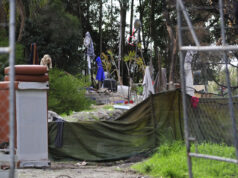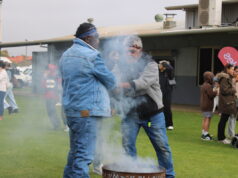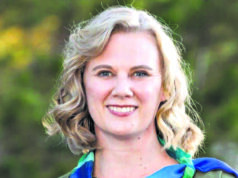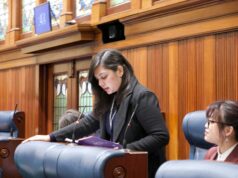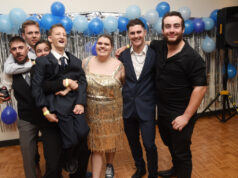
Parkwood residents were up in arms over a proposal by Vodafone to construct a mobile radio tower at a community park.
At this week’s meeting council will decide to support or reject a proposed 30-metre tall telecommunications tower at Hossack Reserve in the west of the suburb.
If approved the tower will replace an existing 25-metre light post and the city said it would make no major extra visual imposition on the area because it was 170 metres from the closest houses.
However, residents have approached council opposing the development.
City of Canning councillor Margaret Hall is a representative of the Nicholson Ward, which Parkwood falls into.
She said she had been inundated with calls opposing the tower and she was aware of a community petition, which exceeded the 100 signatures required to be received by council.
“Residents don’t want the tower and we have to listen to them,” she said.
“Why not have a look for another location?”
Ms Hall said she supported investigating the possibility of developing an alternative tower at the nearby Whaleback Golf Course where a tower already exists.
She said even though she had read documents stating the towers posed no adverse health effects she was sympathetic with sceptics in the community especially given the proposal’s proximity to an existing childcare centre.
“There’s no shortage of areas,” she said.
“Quite often they stick them on a big high-rise building and I think they should have a look at the golf course.”
Parkwood resident Markus Trezdziack said he did not think a new tower was necessary for the area.
“It will have a detrimental visual impact on an untainted recreational area,” he said.
A report by the city’s chief executive Arthur Kyron said health concerns were unfounded because radiation coming form the tower would be well below limits set by the Australian Radiation Protection and Nuclear Safety Agency and Vodafone said tests had shown exposure to be hundreds of times lower than the acceptable standard.
A 2016 report by the American Cancer Society said the danger of radiation exposure from cellular phone towers was relatively low and exposure from mobile phones was several times greater than that from the towers.
The city said if approved the tower would greatly improve service in the area for Optus and Vodafone customers and could generate $25,000 a year in rental income.
In his explanation Mr Kyron said the pole could also be constructed in a way so as to blend it into the natural environment.
He recommended council approve the application with the requirement it does not interfere with existing underground infrastructure, the tower design be finalised soon and no plant life be interfered with because of its development. Council voted Tuesday night.


